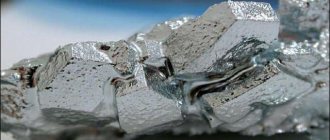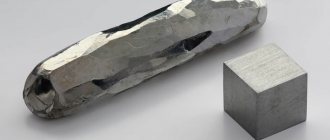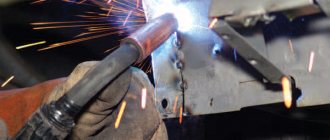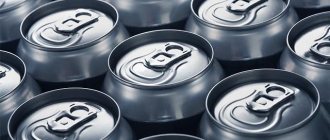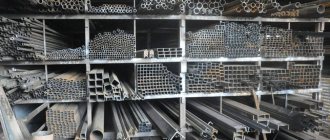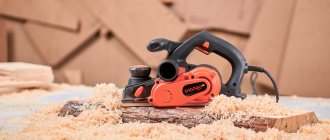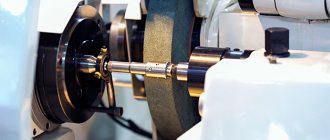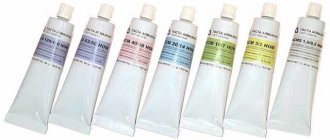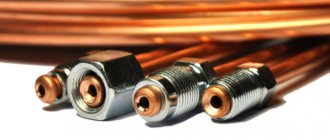In the production of cars, different types of metals and polymers can be used. They are used in the manufacture of bodywork and individual spare parts. Each manufacturer uses different material. This is especially noticeable when comparing cars of domestic and foreign brands. If you know what metal the car is made of, you can independently repair the body if corrosion occurs or after an accident.
Automobile
Features of the automotive industry in Russia
The Russian automobile industry is considered an important sector of the Russian economy. As of 2021, Russia ranked 15th among all countries in the world in terms of the number of vehicles produced. By 2021, the number of domestic cars has reached 15% of total production.
The total number of cars that are imported is 48%. This indicator depends on the models produced and the segment occupied.
Cars
Russia ranks second among European countries in terms of the number of passenger cars produced. Germany is in first place. If we take official data from OICA statistics, Russian automobile manufacturers produced 1,919,636 passenger cars in 2013. At the same time, the total number of cars that EU countries produced in the same year was 11,341,479. Between 2001 and 2008, Russia operated factories that could produce 422,920 passenger cars per year.
Vintage passenger car (Photo: Instagram / givievechy)
Trucks and special equipment
Russia holds second place in the production of trucks and special equipment. Germany takes first place. It is impossible to know the exact statistics, since OICA data regarding trucks has been closed since 2010.
The main factories for the production of special equipment and trucks were introduced in several stages:
- from 1991 to 1999;
- from 2001 to 2008;
- from 2005 to 2007 (the most powerful production facilities were involved).
If we compare the statistics of trucks produced in 2021 and 2017, in 2021 production increased by 50.4%.
Buses
Russia is the absolute leader in bus production. According to OICA statistics, 23,107 heavy buses were produced and put into service in 2013. At the same time, all EU countries over the same period of time were able to produce only 12,460 vehicles of this type.
The main plants were introduced from 2001 to 2008.
Buses (Photo: Instagram / cifratv23)
Steel body
Nowadays, car bodies are mostly made of steel. Depending on the chemical composition, it can significantly change its properties. Even ordinary sheet steel is quite strong and at the same time very ductile. This is what is required for the manufacture of external stamped body panels, which in modern cars are sometimes of a very complex shape.
High-strength steel is often used in the load-bearing structures of cars. As a rule, it is used to make the most, let’s say, critical parts of the body, which take on the loads from the engine, transmission, chassis, as well as impact energy in the event of an accident. High-strength steels make it possible to make these parts thinner and lighter without compromising reliability. It is not surprising that in some models (in particular, the latest generation Mazda 6) such steel accounts for up to 50% of the total body weight.
The technology for producing steel bodies is simple and has been established for a long time. In addition, their parts are easily connected, for example, by various welding methods. In addition, steel is cheaper than other materials. Therefore, a body made from it is inexpensive to manufacture and inexpensive to operate. After all, in case of damage, steel parts are easily repaired. Finally, when the car has served its purpose, such a body can be easily disposed of. However, steel also has disadvantages - it is quite heavy and does not resist rust well. Therefore, automakers are experimenting with alternative body materials.
Popular automotive companies in Russia and the USSR
Companies that made the greatest contribution to the development of the automotive industry:
- AvtoVAZ - Volzhsky Automobile Plant. Was founded in 1966. Now about 20% of all cars in Russia are manufactured by this company.
- KamAZ - Kama Automobile Plant. It is considered the best manufacturer of trucks in Russia.
- UAZ - Ulyanovsk Automobile Plant. Founded in 1941. In recent years, the company has modernized equipment for car production and increased sales.
- GAZ - Gorky Automobile Plant. The oldest automobile manufacturer in Russia. The company was founded in 1932. The pedigree begins with the legendary representatives of the Ford company.
Less well-known manufacturers are LiAZ, PAZ, GolAZ, BAZ.
What material is used to make a car?
For the manufacture of cases and main parts for cars, different materials can be used (titanium, carbon fiber, gold, etc.), but the most popular are aluminum, steel and plastic.
Gold bars (Photo: Instagram / gold_officiel)
Steel
Among all types of automotive metal, low-carbon sheet steel is considered the most popular. Suitable sheet thickness is from 0.65 to 2 mm.
Advantages of steel for car body assembly:
- High strength, rigidity.
- Low price.
- Easy to repair.
Since the technology has long been proven, most technological operations can be performed by robots.
Flaws:
- Large mass of finished products.
- Short service life.
- The need to make a large number of stamps.
To prevent steel surfaces from rusting, they must be coated with a special anti-corrosion compound.
The car body is manufactured in several stages. Initially, individual parts are produced from steel sheets of different thicknesses. They are then welded to form large assemblies. The last stage of assembly is connecting the individual parts into a single structure.
Steel sheets (Photo: Instagram / absolut_metall35)
Aluminum
Aluminum alloys began to be used in the automotive industry quite recently. The material is suitable for the manufacture of the entire body or its individual parts.
More often, parts made of aluminum and steel are combined with each other to achieve the optimal weight of the car. Assembling a case from aluminum parts is practically no different from working with steel. The exception is the welding of individual parts. It is carried out in an argon environment. Individual parts are fixed with rivets.
Advantages of aluminum:
- Aluminum alloys are lighter and stronger than steel.
- Damaged parts can be easily recycled.
- Finished products are immune to rust formation.
- The parts can be given any shape.
Flaws:
- To work with parts made of aluminum alloys, you need to use special equipment.
- To make a high-quality connection of parts, you need to use expensive equipment.
- Parts are difficult to repair.
Aluminum (Photo: Instagram / tipichnyiizolirovshchik)
Polymers
Since metal makes the structure heavier, most manufacturers use polymers in the manufacture of the body. On plastic cars it is easy to squeeze out maximum power and achieve maximum speed
Different types of polymers are used in production:
- ABS plastic.
- Polypropylene.
- Fiberglass.
- Polyurethane.
- Polyvinyl chloride.
- Polyamide.
- Polyethylene.
- Polycarbonate.
- Polyacrylate.
Fiberglass is most often used. Its advantages:
- light weight;
- high strength;
- ease of manufacturing parts of various shapes.
Flaws:
- Long production times for parts.
- Difficulty in repairing damage.
- High price for fillers.
Plastic is cheaper than other materials.
Fiberglass car (Photo: Instagram / la_design_workshop)
Composite body
Another type of body material is composite materials. It is a “hybrid” material made from several combined together. Such production makes the composite body optimal in quality, since it combines the best from each component.
In addition, composite materials are more durable, they can be used to make the largest and most continuous parts, which undoubtedly simplifies the production itself.
Composite materials include, for example, carbon fiber, which, by the way, is most often used in production. Carbon fiber is used to make body frames for supercars.
The disadvantages of this material include the complexity of its use in the automotive industry. Sometimes manual labor is even necessary, which, of course, ultimately affects the price. Another drawback is the almost impossibility of restoring carbon fiber parts after deformation during accidents. All this contributes to the fact that cars with carbon fiber bodies are practically not produced en masse.
Each body type has its own advantages and disadvantages. It all depends on the tastes of consumers, that is, you and me.
Good luck with your purchases and be careful!
How to carry out body repair?
If the car body is made of steel, you can repair it yourself. You don't need to learn automotive engineering to do this. It is enough to be able to handle the tool, to know the technology of machine production in theory.
Body repair (Photo: Instagram / skr53b)
Material selection
To repair the body, you need to buy a sheet of low-carbon steel. To do this, you can visit a construction market or a car dismantling center. With the second option, you can find a whole replacement part at a low price.
Equipment
To carry out the work you will need a grinder, an argon cutter, a welding machine, metal scissors, and accessories for power tools. To completely hide the damage, you need a primer, putty, paint, brushes, a spray bottle, and an anti-corrosion compound. If the damage site is difficult to reach, you will need a jack or hole.
For the production of machines, metal is used that meets certain requirements. Recently, plastic has been gradually replacing steel and aluminum-based alloys, but the production of metal cars continues.
Plastic body
In the second half of the twentieth century, this material was considered very promising. Parts made from it were even lighter than aluminum, which promised a significant reduction in body weight. In addition, it is easy to give plastic any, even the most fanciful, shape, and in addition, it does not require a paint coating, since with the help of special additives in its composition you can get a material with almost any color. Finally, plastic does not corrode at all, which means it is very durable. And the technology for producing such bodies is quite simple.
However, these advantages are offset by several disadvantages. The properties of plastic are strongly influenced by air temperature - some of its types become very fragile at sub-zero temperatures, and excessively soft in the heat. The production of plastics is not environmentally friendly, and their processing requires special technology and equipment. Also, this material is not suitable for the manufacture of parts that must withstand high loads. And if damaged, plastic panels usually need to be replaced - their repair is expensive, and sometimes even impossible. Over time, technologists managed to solve some of these problems, but only partially. Therefore, now, mainly, only attached body elements are made from plastic - bumpers, moldings, and less often - wings.
